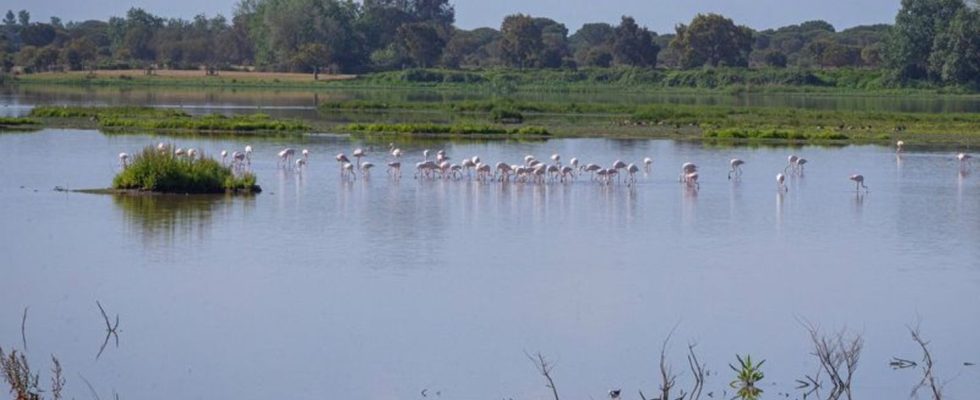Spain
1.4 billion euros for Europe’s largest wetland
In the Doñana National Park, founded in 1969, which, together with an area protected as a nature park and a buffer zone, is about half the size of Saarland, the groundwater level has been declining for years. photo
© Francisco J. Olmo/EUROPA PRESS/dpa
One of Europe’s most important wetlands in southern Spain is in danger of drying out because of water-intensive strawberry plantations. Now Spain wants to save the UNESCO world natural heritage with a lot of money.
A controversial legislative proposal by Moreno, which was intended to legalize illegally drilled wells and cultivation areas, is therefore off the table. Environmental protection organizations protested against this project and the central government and the EU Commission threatened legal action.
The agreement stipulates, among other things, that the state pays farmers a total of 100,000 euros for each hectare of previously cultivated land set aside over a period of five years. There should be further aid for farmers who do not want to renaturate areas but instead want to switch to less irrigation-intensive crops or organic farming. In addition, sewage treatment plants, canals and retention basins should be expanded and alternative energies should be promoted. 32 million euros are earmarked for improving the working conditions of thousands of seasonal workers on strawberry and blueberry plantations and promoting the Doñana brand name as a sustainable, quality product.
A rich fauna and flora
In the Doñana National Park, founded in 1969, which, together with an area protected as a nature park and a buffer zone, is about half the size of Saarland, the groundwater level has been declining for years. Legal and illegal wells, which are used to divert large amounts of water for fruit and vegetable plantations, also contribute to this. Around a third of the strawberries produced in 2021 went to Germany, the world’s largest buyer.
The Costa de la Luz wetland along the Guadalquivir River has a unique diversity of ecosystems. It is home to a rich fauna and flora, including endangered species such as the imperial eagle, the Iberian lynx and the Moorish tortoise. And also shifting dunes, endless beaches, forests, bushes and wetlands.

